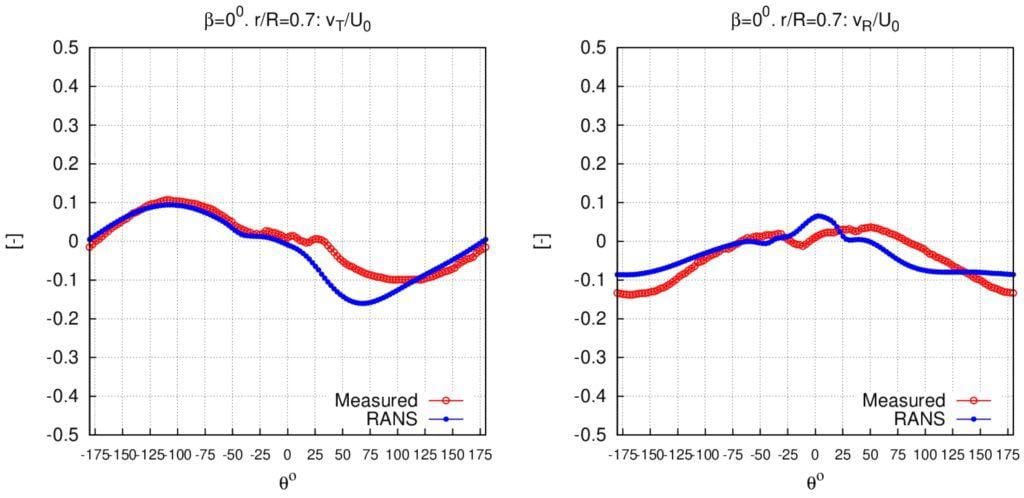Download the java script discussed in this blog post:
Naval Architects are typically very interested in a ship´s “foot print”, when she is moving through the water and leaves an uneven flow distribution. Of course, we can in no case avoid this effect but when it comes to propeller design, we can use this as an opportunity to make a difference between a good and perfectly adapted propeller design.
A typical representation of the wake field is a plot of the velocity ration distributions at the propeller plane (as shown below). However, if you are interested in a reasonably precise representation you might want to describe the flow encountered by the propeller as a function of blade angle at each radial location. In this week´s blog post we describe an efficient way how you can do that in Simcenter STAR-CCM+ with the help of a java macro.

Plotting the axial, radial and tangential velocity components in circumferential direction at a specific radius enables direct comparison of design changes of the propeller or the hull shape. More over can such plot be used to compare measured results, for instance probe the value of certain quantities in specified locations, with computational prediction (see figure below).


(Reference: Calcagni, D.; Dubbioso, G.; Capone, A.; Ortolani, F.; Broglia, R. A Generalized Hybrid RANSE/BEM Approach for the Analysis of Hull–Propeller Interaction in Off-Design Conditions. J. Mar. Sci. Eng. 2021, 9, 482. https://doi.org/10.3390/jmse9050482)
Derived Parts to probe
To be able to extract data along a path we need a derived part. There are for instance Probe Points and Probe Lines readily available in Simcenter STAR-CCM+. Probe Lines define a start and end point respectively, along with an adjustable resolution of Probe Points in between. This is a great feature, however, it is restricted to a straight line. But with rotating objects we would like to follow a circular path. For a plot of flow components we need a set of Probe Points in front of or behind the propeller plane, discretized in radial and circumferential direction. This requires either some manual action to create points or automation of a repetitive task.

Automation with java macro
To do this with the help of a macro, we only need to provide the discretization with the required number of radii blade angles. But we assume that we already have a coordinate system at the propeller location, following the motion of the ship.
// Define radii and theta int nRadii = 5; // number of radii int nTheta = 30; // number of blade positions int nThetaStart = 0; // blade start position double dDp = 0.125; // propeller diameter [m]

The first step in the macro is to create a new local cylindrical coordinate system with an offset to the propeller plane. This will be the Probe Points coordinate system. In the next step, the macro creates nTheta Probe Points at each of the nRadii and:
- Defines the probe´s coordinates
- Sets the region it belongs to
- Creates a Report with the Field Function, e.g. the WakeFraction
- Writes the probe values as a function of radius to a CSV file
- Reads the newly created CSV back into the simulation an adds it to a XY Plot
Eventually, the reports are cleaned up and the only thing you need to do is to open the plot scene. In case you would like to compare the effect of different hull shapes or propeller geometries, you can add the macro to your Design Study Settings in Design Manager. Set the Macro Insertion Point to:
Before Results—to perform the actions after the Simcenter STAR-CCM+ solver completes, and before any results are returned to Design Manager.

We at Volupe hope that this blog post about automating boring manual task has been interesting and that it will help you in your work. You can download the java script described here at the top of this page. And don’t forget that you are always welcome to reach out to us at support@volupe.com.
The Author
Florian Vesting, PhD
Contact: support@volupe.com
+46 768 51 23 46
